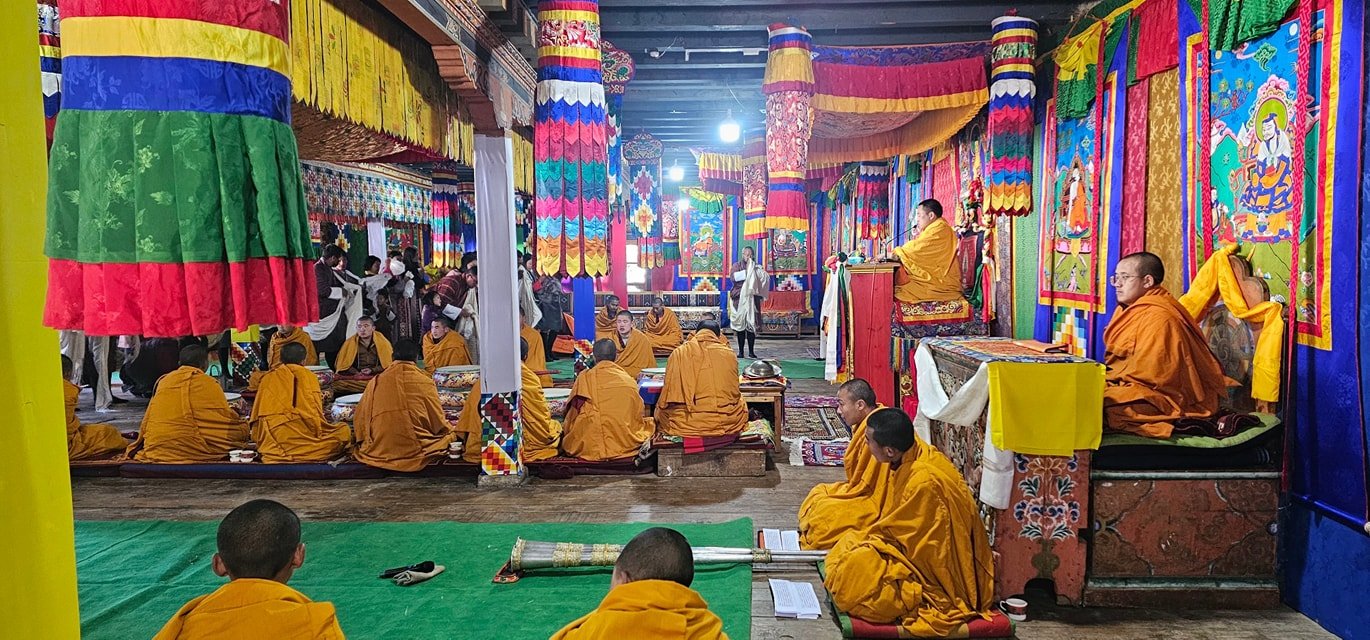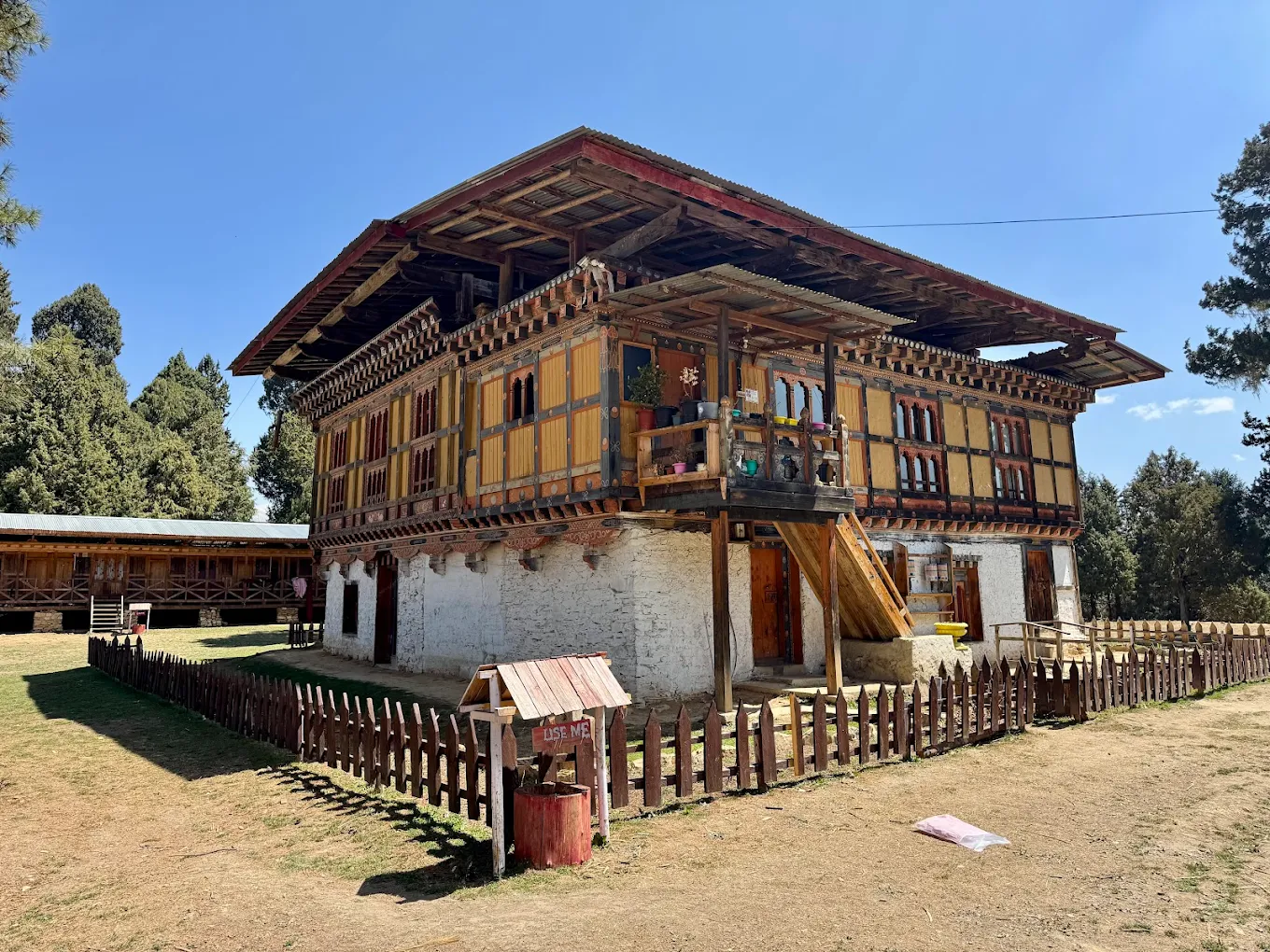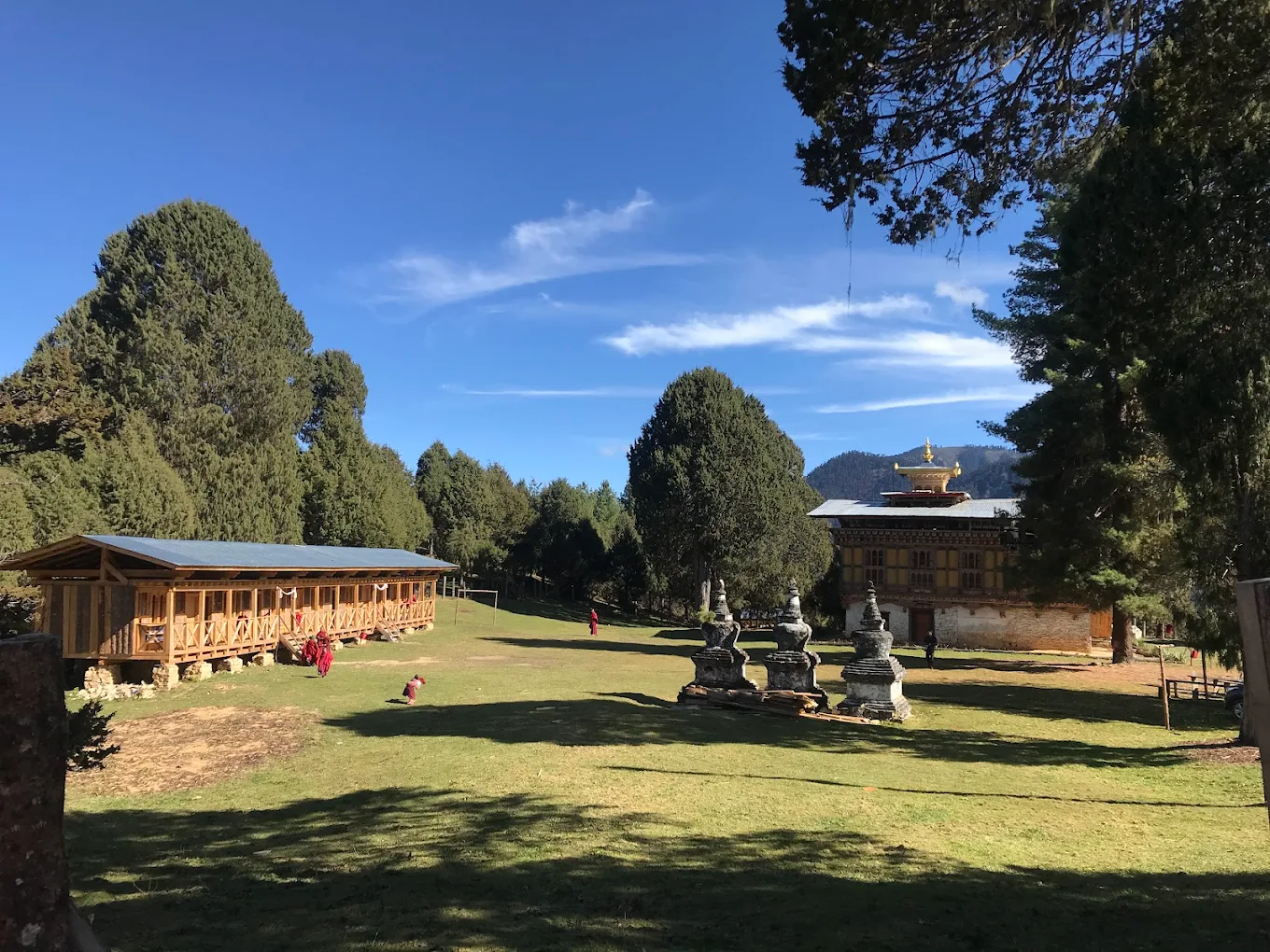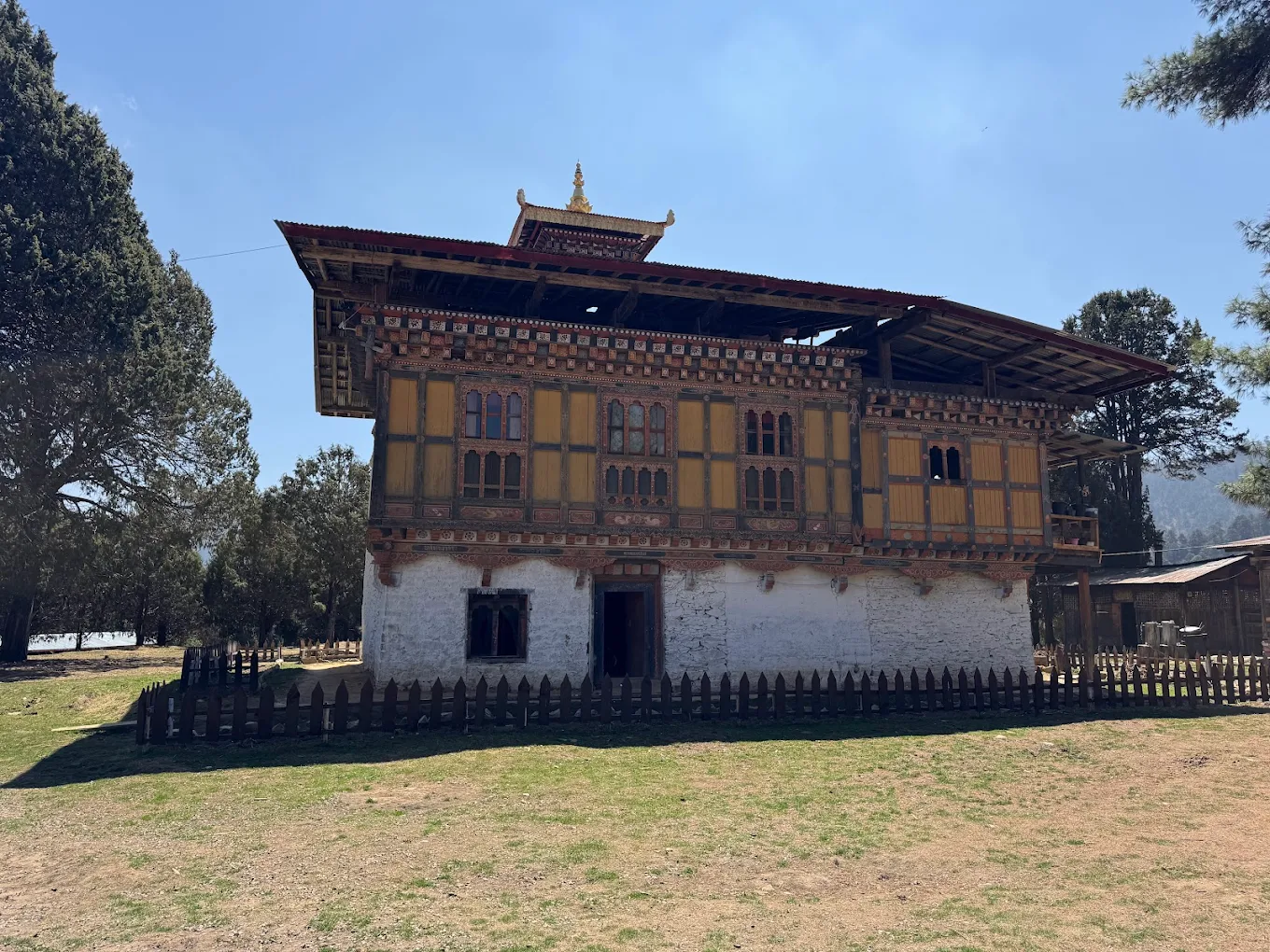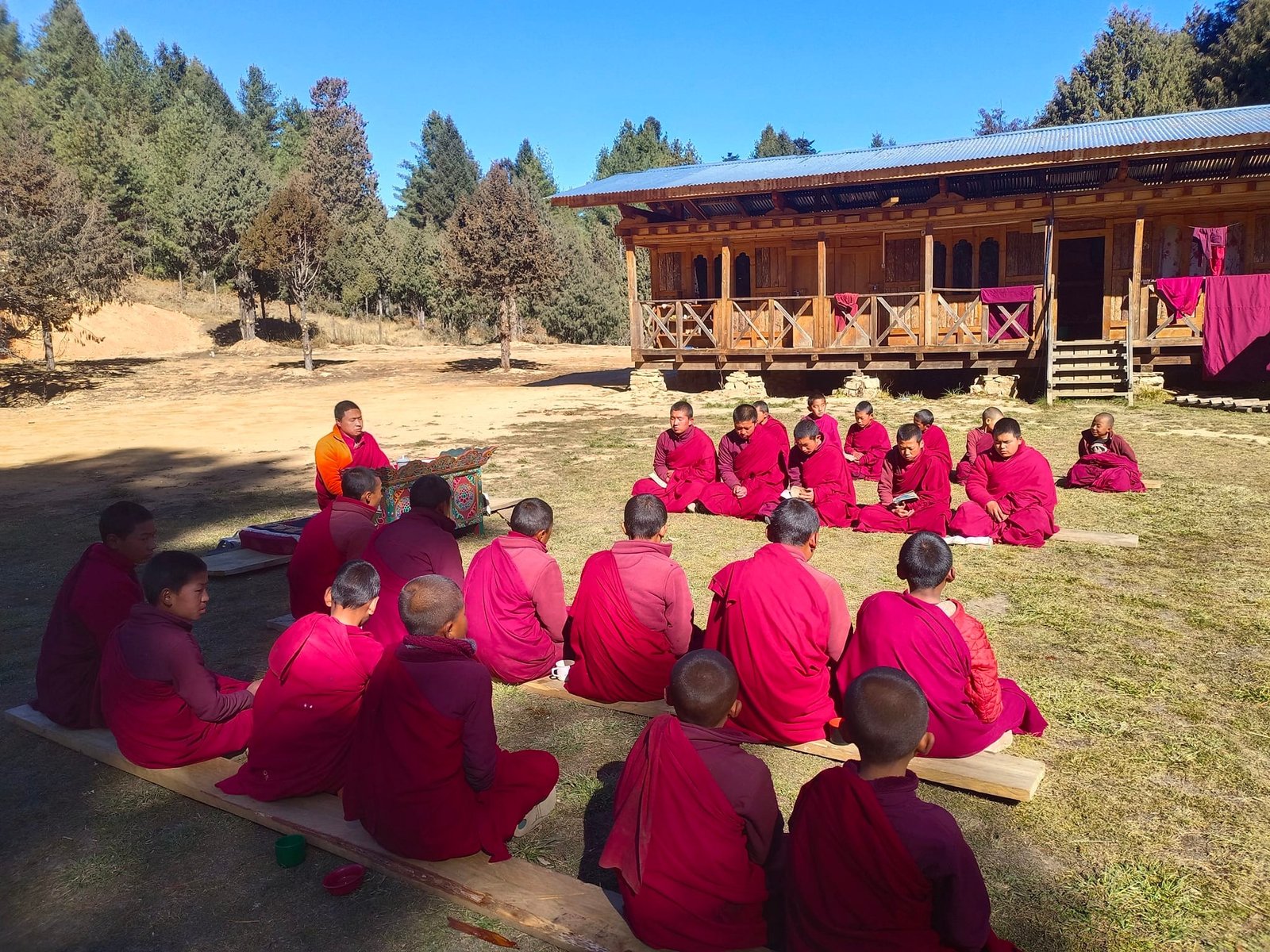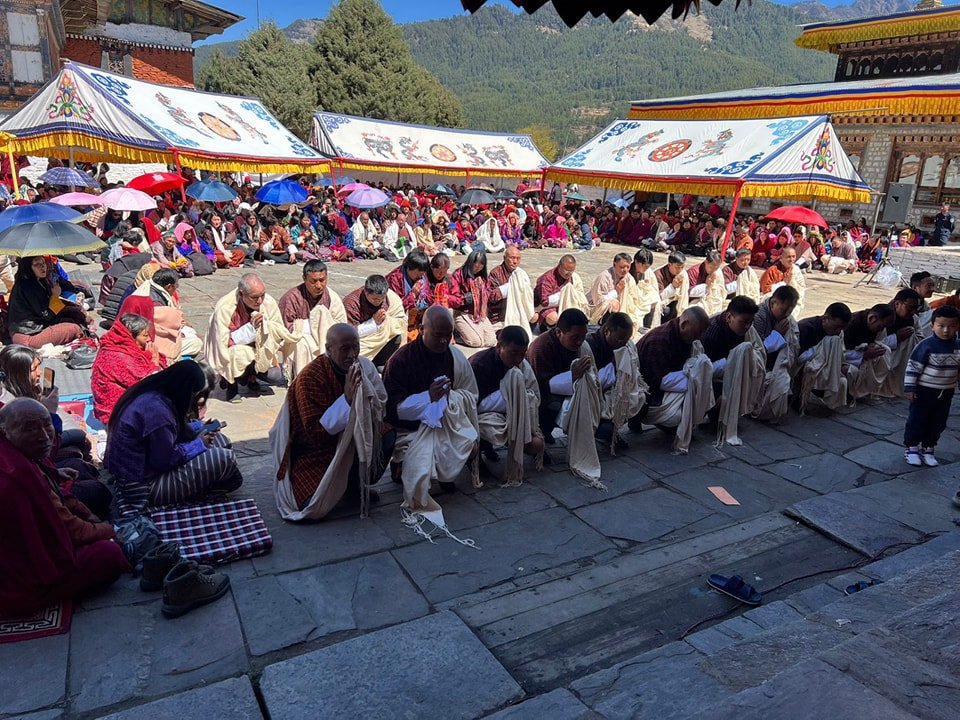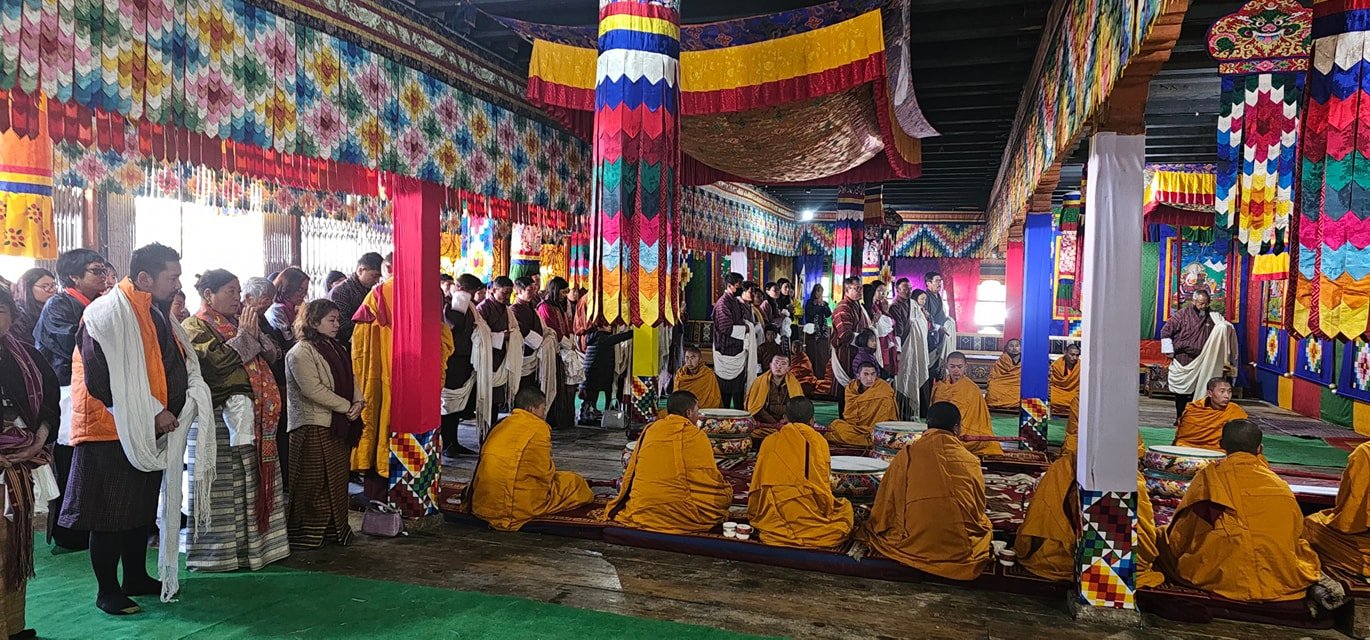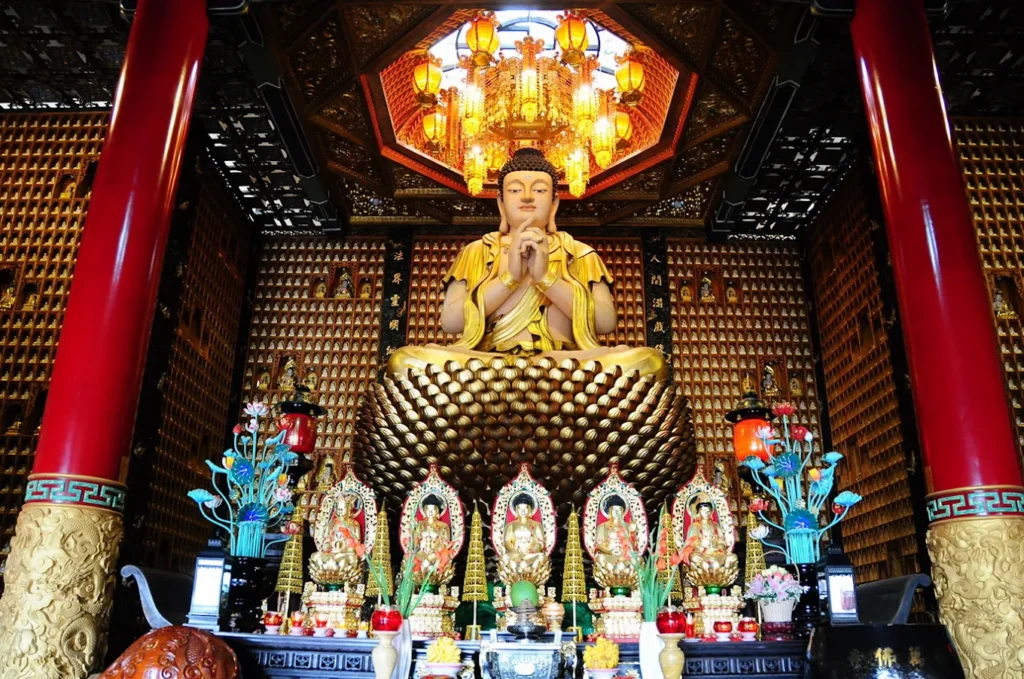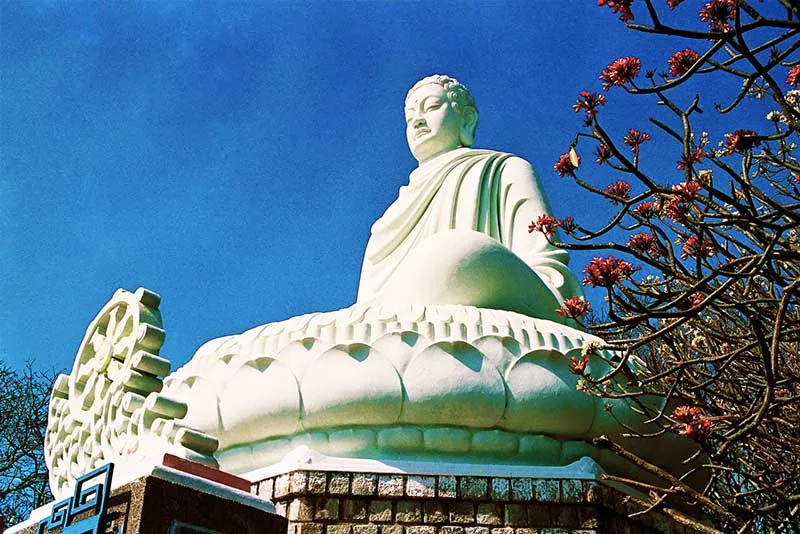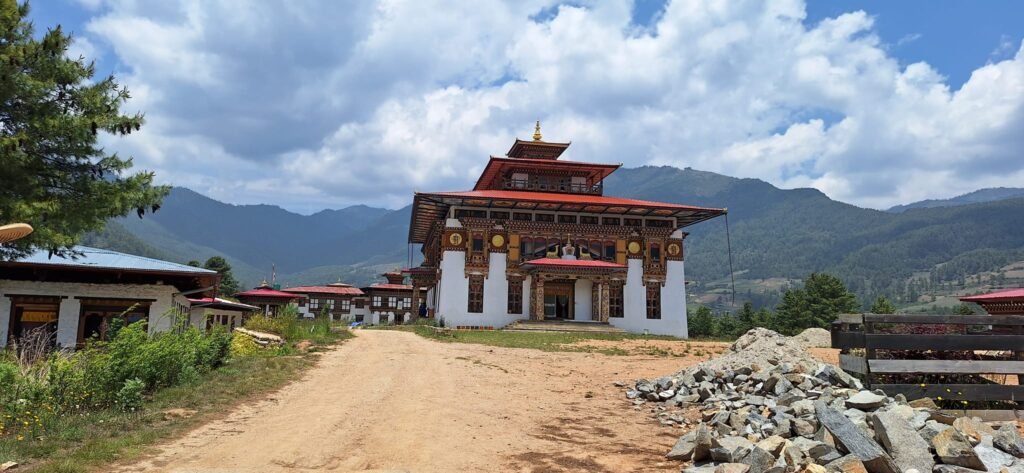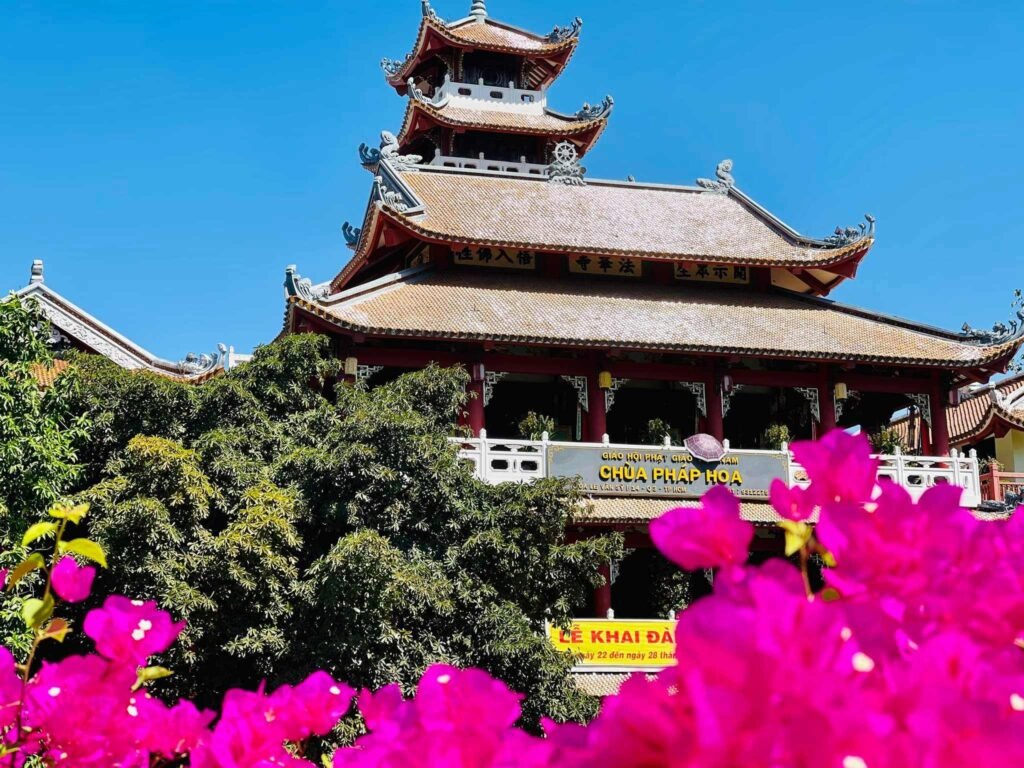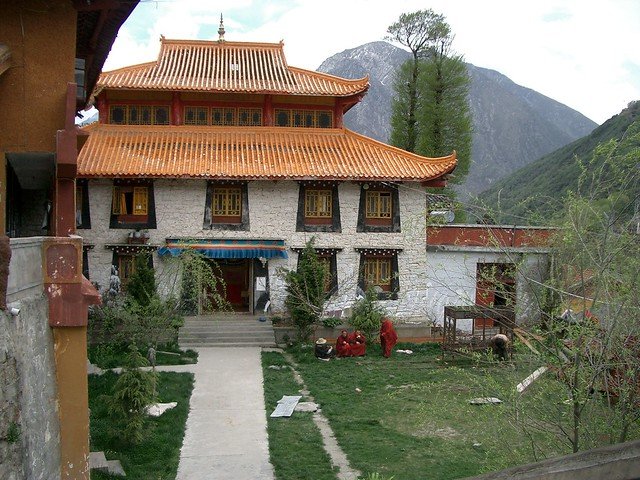Dorjitse Monastery: The Sacred Vajra Peak of Tang’s Drukpa Kagyu Legacy
Rising majestically on a mountain shaped like a five-pronged Vajra, where the morning mist cloaks the rugged slopes of Tang Valley, Dorjitse Monastery stands as a beacon of spiritual solitude, its stone walls catching the dawn’s gentle light. Within the sacred main temple (lhakhang), monks chant the Om Mani Padme Hum mantra, their voices resonating around a statue of Vajravarahi, the protective deity. Established in the late 12th century by Lama Gyalwa Shacha Rabgay, the third reincarnation of Gyalsey Darmadodey, this Drukpa Kagyu sanctuary is celebrated for its legendary origins tied to a flying pigeon. The air carries the scent of juniper incense, lit during prayer sessions, while prayer flags flutter against the Himalayan breeze, blessing the valley below. From its elevated perch in Bumthang Dzongkhag, the sweeping vista of Tang unfolds, connecting the monastery to Bhutan’s spiritual heart. This sacred retreat invites travelers, seekers, and scholars to ascend its trails and immerse themselves in the profound heritage of Drukpa Kagyu devotion.
Whispers of the Pigeon: Overview and Significance
Introduction to Dorjitse Monastery
Dorjitse Monastery, situated on a mountain ridge north of Phromphrong village in Bumthang Dzongkhag, Bhutan, at an elevation of approximately 3,200 meters, stands as a revered Drukpa Kagyu sanctuary, renowned for its historical association with Gyalsey Darmadodey and its unique Vajra-shaped location. A three-hour hike from Phromphrong village reveals a tranquil retreat where the rustle of pine forests and valley silence create a peaceful ambiance. Established in the late 12th century by Lama Gyalwa Shacha Rabgay, it embodies Bhutan’s Drukpa Kagyu heritage, blending meditation with legendary origins. A cultural and spiritual gem, the monastery weaves history, prophecy, and Himalayan reverence into a timeless refuge.
Historical Journey
Dorjitse Monastery’s history traces back to the late 12th century, when Lama Gyalwa Shacha Rabgay, the third reincarnation of Gyalsey Darmadodey—son of Marpa Lotsawa—founded it following a divine prophecy. According to legend, as Gyalsey Darmadodey neared death in Tibet, Marpa empowered him with phowa drunjug (transference of consciousness), enabling his spirit to enter a dead pigeon that flew toward India. Seeing a mountain in central Bhutan resembling a five-pronged Vajra, the pigeon landed, and Vajravarahi instructed Rabgay to build a monastery there, where he found a rock with a pigeon’s claw-print and his own footprint. The site, initially a modest structure, has been maintained by local communities, preserving its sanctity as a pilgrimage center.
Cultural Significance
- Drukpa Kagyu Devotion: Rooted in the Drukpa Kagyu lineage, the monastery venerates Vajravarahi and Guru Rinpoche, emphasizing meditation and spiritual prophecy.
- Bhutanese Heritage: A spiritual anchor, it preserves rituals like mantra recitation and pilgrimage, reflecting national identity.
- Pilgrimage Legacy: The Vajra mountain and pigeon legend enhance its sacred role.
- Regional Influence: Pilgrimages draw devotees from Bumthang and central Bhutan, fostering community ties.
Unique Legacy
- Vajra Mountain: Its shape and location hold sacred potency, a verified natural feature.
- Pigeon Prophecy: The legend of Gyalsey Darmadodey’s flight distinguishes its history.
- Historical Endurance: Survived centuries, reflecting Bhutanese resilience.
- Cultural Symbol: Its spiritual narrative mirrors Bhutan’s divine heritage.
Community and Global Impact
- Local Devotion: The monastery hosts prayers and pilgrimages, strengthening Bumthang’s Drukpa Kagyu ties.
- Pilgrimage Hub: Visitors are drawn by the Vajra site and legend.
- Global Appeal: International meditators seek its spiritual and historical allure.
- Cultural Dialogue: Shared rituals unite Bhutanese and global visitors.
Modern Relevance
- Spiritual Retreat: Dorjitse offers a haven for mindfulness in its mountain seclusion.
- Cultural Preservation: It safeguards Drukpa Kagyu practices, ensuring Bhutan’s heritage endures.
- Pilgrimage Influence: The Vajra legend attracts global spiritual seekers.
Historical Anecdotes
- Pigeon’s Flight: Gyalsey Darmadodey’s miraculous journey inspired its founding.
- Vajravarahi’s Command: Her guidance sanctified the site.
- Footprint Miracle: Rabgay’s imprint confirmed the prophecy.
Social Role
- Community Hub: Prayers unite Bumthang’s Buddhists.
- Pilgrimage Center: Monks guide devotees in mountain rituals.
- Charitable Spirit: Communal support reflects Drukpa Kagyu compassion.
Artistic Influence
- Thangka Art: Murals of Vajravarahi inspire Bhutanese artists.
- Cultural Icon: The Tang view graces local imagery.
- Festival Art: Prayer flags showcase Bhutanese craftsmanship.
Dorjitse Monastery’s mountain aerie, where Lama Gyalwa Shacha Rabgay fulfilled a divine vision, weaves a narrative of devotion and prophecy that defines Bhutan’s Drukpa Kagyu legacy. From its late 12th-century origins to its role as a pilgrimage site, the monastery’s history resonates with the solitude of Tang Valley, uniting monks and pilgrims. Its sacred halls and scenic trails set the stage for an architectural tapestry that mirrors its Himalayan soul. As we delve into its physical and spiritual features, Dorjitse’s design reveals how its Vajra beauty nurtures profound faith and reflection.
Crafted by the Vajra: Architectural and Spiritual Features
Iconic Design
Dorjitse Monastery’s architecture blends Drukpa Kagyu simplicity with its Vajra-shaped mountain setting, creating a sanctuary that harmonizes with Tang’s rugged terrain. Stone walls and wooden roofs, adorned with prayer flags, rise from the 3,200-meter elevation, reflecting Buddhist austerity. The modest layout, centered on the main lhakhang, prioritizes meditative function, with courtyards fostering pilgrimage. Its perch on the Vajra peak enhances its sacred resonance, tying the monastery to Bhutan’s Himalayan ethos.
Key Structures
- Main Lhakhang: The spiritual core, housing Vajravarahi’s statue, built in the 12th century.
- Chorten Courtyard: Stone stupas honor lamas, surrounded by prayer wheels.
- Meditation Cave: A site linked to the pigeon legend, used for retreats.
- Prayer Flag Poles: Structures strung with flags, dotting the mountain.
Worshipped Statues
- Vajravarahi: A bronze statue, symbolizing protection, radiates spiritual power.
- Guru Rinpoche (Padmasambhava): A gilt statue, embodying guidance, stands prominently.
- Spiritual Role: Monks offer butter lamps to Vajravarahi, seeking blessings.
Materials and Techniques
- Construction: Local stone and timber, joined with traditional methods, ensure durability.
- Artistry: Simple murals, crafted by early artisans, reflect Drukpa Kagyu style.
- Cultural Essence: The design prioritizes meditative retreat, distinct from dzongs.
Signature Elements
- Vajra Shape: The mountain’s form anchors the spiritual narrative.
- Pigeon Rock: The claw-print site holds legendary significance.
- Prayer Flags: Fluttering flags carry blessings across the valley.
Preservation Efforts
- Maintenance: Community efforts preserve the lhakhang and cave.
- Challenges: Mountain erosion affects stonework, requiring care.
- Modern Additions: Solar lights enhance evening accessibility.
Environmental Integration
- Mountain Harmony: The monastery’s design respects Tang’s ecosystem.
- Eco-Practices: Monks maintain trails and protect pine forests.
- Wildlife Haven: Birds nest nearby, enhancing serenity.
Landscape Integration
- Ridge Perch: Enhances meditative focus with valley views.
- Tang Vista: The valley mirrors inner peace.
Dorjitse Monastery’s stone lhakhang and sacred spaces, overlooking Tang Valley, are sanctuaries for the Drukpa Kagyu practices that define its spiritual soul. The statue of Vajravarahi, illuminated by butter lamps, anchors rituals that connect monks to Bhutan’s spiritual lineage. These hallowed spaces, alive with chants and pilgrimage, invite visitors to engage with the monastery’s living traditions. As we explore its rituals, Dorjitse’s role as a meditative retreat comes to life, guiding devotees toward protection and enlightenment.
Rites of the Vajra: Rituals and Practices
Daily Sacred Rites
- Morning Chanting: Monks recite the Om Mani Padme Hum mantra at dawn, fostering compassion.
- Meditation Sessions: Silent meditation, held twice daily, centers on Mahamudra practices.
- Butter Lamp Offerings: Devotees light lamps before Vajravarahi, praying for protection.
Unique Practices
- Cave Meditation: Monks meditate in the pigeon cave, honoring Gyalsey’s legacy.
- Vajra Rituals: Ceremonies celebrate the mountain’s shape, a Drukpa Kagyu tradition.
- Signature Ritual: Offering khata scarves at the pigeon rock, tied to prophecy.
Festival Traditions
- Dorjitse Tshechu (dates vary): A local festival with prayers and circumambulation.
- Lhabab Duchen: Ceremonies honor the Buddha’s descent, with chorten circuits.
- Statue Veneration: Vajravarahi’s statue is adorned with silk during festivals.
Visitor Engagement
- Accessible Rituals: Visitors can join chants or visit the cave, guided by monks.
- Offerings: Butter lamps and prayer flags, available at the monastery, invite participation.
- Drukpa Etiquette: Bow before statues and maintain silence during meditation.
Spiritual Community Roles
- Monastics: Around 10–20 monks maintain the site and lead rituals.
- Lamas: Senior monks guide cave meditations and pujas.
- Lay Devotees: Bumthang villagers maintain trails and support events.
Ritual Symbolism
- Butter Lamps: Represent wisdom illuminating protection.
- Khata Offerings: Symbolize purity and devotion.
- Cave Imprint: Signifies Gyalsey’s divine presence.
Monastic Life
- Daily Routine: Monks rise at 5:00 AM for chants, meditation, and maintenance.
- Community Service: Monks guide pilgrims and protect the site.
- Training Hub: Monks learn Drukpa Kagyu practices, supporting Bumthang’s faith.
Dorjitse Monastery’s rituals, from the Om Mani Padme Hum mantra to cave meditations, breathe life into its mountain sanctuary, connecting devotees to the Drukpa Kagyu lineage. The monastery’s spiritual practices, rooted in Bhutan’s prophetic faith, invite visitors to engage with its sacred heart, whether through chants or cave visits. For travelers, these rites offer a glimpse into Tang’s sacred traditions, accessible within its rugged grounds. As we turn to visitor information, Dorjitse’s mountain setting guides practical planning, ensuring a meaningful journey to this spiritual retreat.
Journey to the Vajra Peak: Visitor Information
Navigating to Dorjitse Monastery
- Location: Bumthang Dzongkhag, 3,200 meters, accessible via a trail from Phromphrong village in Tang Gewog.
- Landmarks: Near the Vajra-shaped mountain and Phromphrong village, with Dzongkha and English signs.
- Routes: Hike from Phromphrong (3 hours) or drive via the farm road (1 hour, weather permitting).
Address of Dorjitse Monastery
- Dzongkha: Dorjitse Goenpa, Bumthang Dzongkhag, Bhutan.
- English: Dorjitse Monastery, Bumthang District, Bhutan.
Visiting Hours and Etiquette
- Hours: Open daily, 6:00 AM–5:00 PM, with ceremonies varying by schedule.
- Etiquette: Dress modestly, remove shoes before lhakhang, and avoid disturbing rituals.
- Drukpa Custom: Offer butter lamps with both hands and bow to statues.
Transport Options
- By Foot: Hike from Phromphrong village (3 hours, moderate difficulty).
- By Vehicle: Drive via the farm road to the base, then walk (1 hour).
- By Horse: Local guides may offer horses, arranged at Phromphrong.
Accessibility and Safety
- Mobility: Steep trails and high altitude may challenge those with mobility issues; no ramps available.
- Safety: Stable paths with guideposts; carry water and layers for elevation.
- Tips: Wear sturdy hiking boots and bring a packed lunch.
Amenities and Surroundings
- Facilities: Basic restrooms near the monastery; no shops on-site.
- Nearby: Kunzangdrak Monastery and Tang Rimochen Lhakhang, within 10–15 km, offer cultural experiences.
- Dining: Picnic areas encourage packed meals, with options in Phromphrong.
Immersive Visitor Tips
- Best Timing: Early morning hikes offer clear views and monk chants.
- Sensory Moments: Inhale pine-scented air and hear valley silence.
- Statue Connection: Offer butter lamps to Vajravarahi and reflect briefly.
- Pilgrimage Planning: Visit the pigeon cave for spiritual connection.
Photography Tips
- Best Angles: Capture the lhakhang at sunrise for golden light.
- Respectful Shots: Avoid photographing rituals without permission.
- Scenic Views: The Tang Valley offers stunning panoramas.
- Equipment: A lightweight camera suits the trek.
The journey to Dorjitse Monastery, guided by Tang’s mountain trails, is a pilgrimage that blends spiritual discovery with sacred legend, inviting visitors to engage with its Drukpa Kagyu traditions. The monastery’s lhakhang and cave, vibrant with chants and reverence, offer a window into Bhutan’s sacred heart, where prophecy feels alive. Beyond its Vajra beauty, Dorjitse’s deeper cultural and spiritual significance enriches the experience, revealing the essence of Himalayan Buddhism. As we explore these insights, the monastery’s role as a beacon of faith and protection comes into sharper focus, deepening our connection to its sacred legacy.
Insights of the Vajra: Cultural and Spiritual Reflections
Drukpa Kagyu Philosophy
Dorjitse Monastery embodies Drukpa Kagyu’s core: compassion and wisdom through meditation and prophecy. Vajravarahi and Guru Rinpoche inspire devotees, reflected in chants and cave rituals. Mahamudra teachings emphasize direct realization, guiding monks toward enlightenment.
Environmental Spirituality
The monastery’s mountain perch ties it to Himalayan reverence for nature. Tang’s pine slopes and valley views foster meditative calm, with offerings honoring local spirits. The landscape invites reflection on harmony with the natural world.
Artistic Symbolism
Murals depict Vajravarahi’s protection, symbolizing spiritual strength. The pigeon rock represents Gyalsey’s legacy, while prayer flags balance elements. These elements weave Drukpa Kagyu ideals into the monastery’s aesthetic.
Community Resilience
Founded by Lama Gyalwa Shacha Rabgay’s followers, Dorjitse reflects Bhutanese perseverance through time. Its preservation showcases collective faith, sustained by community efforts.
Environmental Stewardship
The monastery’s slopes foster Buddhist eco-ethics. Monks protect trails and pine forests, urging visitors to honor the mountain’s sanctity.
Meditative Practices
Drukpa Kagyu meditation, including Mahamudra, cultivates awareness. The cave offers spaces for retreat, guided by monks, amplifying inner peace.
Cultural Narratives
- Gyalsey’s Legacy: His pigeon flight inspires devotion.
- Vajravarahi’s Command: Her guidance links past and present.
- Pilgrimage Lore: Cave visits carry Drukpa Kagyu traditions.
Historical Context
- Drukpa Roots: Gyalsey Darmadodey’s 12th-century influence shaped its identity.
- Rabgay’s Era: The late 12th-century founding strengthened its role.
- Community Continuity: Preservation ensures its legacy.
Reflecting on the Journey
Dorjitse Monastery, cradled on Tang’s sacred Vajra peak, is a sanctuary where protection meets wisdom. Its lhakhang and cave, alive with Vajravarahi’s legacy, embody Bhutan’s Drukpa Kagyu soul, inviting all to seek enlightenment. The monastery’s trails, worn by centuries of pilgrims, tell a story of devotion, rooted in Himalayan faith. Whether meditating before Guru Rinpoche, exploring the pigeon cave, or tracing Bhutan’s prophetic heritage, visitors find a space to reflect and connect. As you descend, the pine scent and prayer flags’ flutter linger, a reminder that peace is always within reach.
